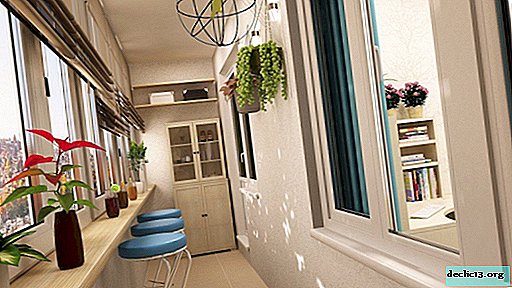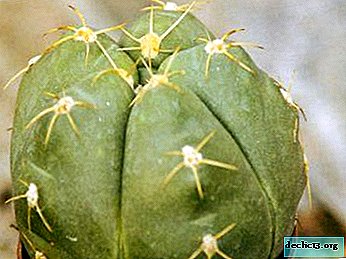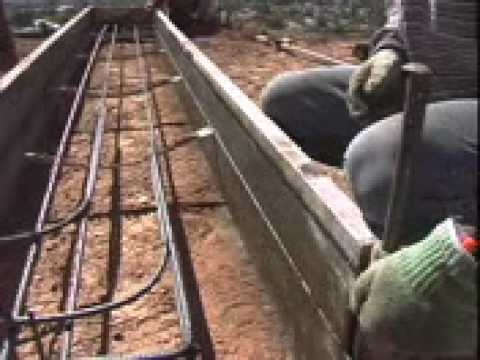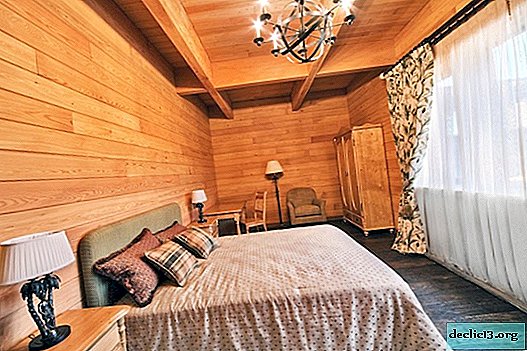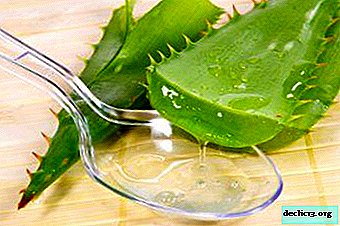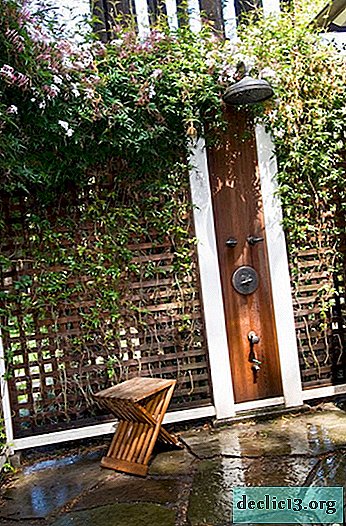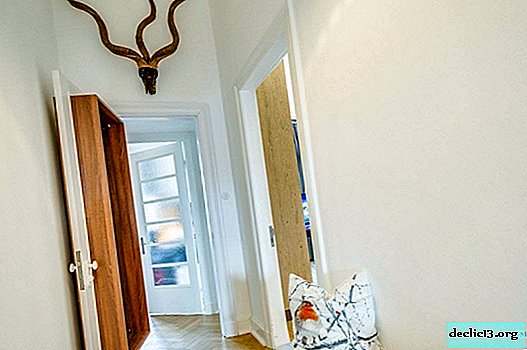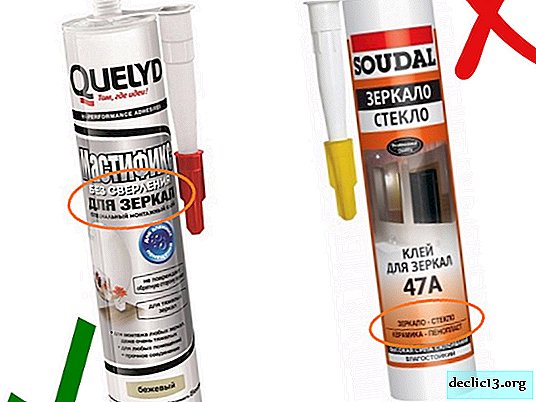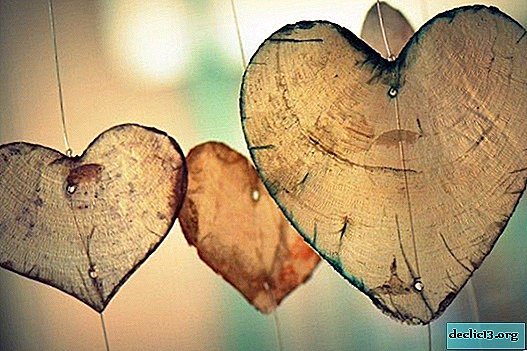Features of difficult care and growing gloxinia at home
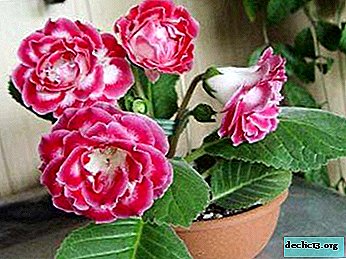
Gloxinia (Latin Gloxinia) is a tropical perennial plant. Named after the German physician and botanist Benjamin Peter Gloksin. Another name is gloxinia sinningia (lat. Sinningia).
Distributed in South America (Peru, Brazil). Tuberous from the Gesneriaceae family. The leaves are velvety, and the stem is shortened. There are some difficulties in growing. If you want to grow a beautiful plant, but your maximum level is a cactus, then I strongly recommend not to take up the cultivation and breeding of this plant.
How to breed and grow these flowers?
Light and temperature
Gloxinia is a photophilous plant. However, in direct sunlight, he will die. The light should be scattered, and daylight hours is 12-14 hours. Poorly tolerates temperatures below 17 ° C. The optimum is 20 ° C. However, in winter, during the rest period of gloxinia, a temperature of about 10 ° C is needed. If the leaves stretch too much upwards, it means the plant is hot, if it falls below the edge of the pot, it means it freezes.
 A simple way to find out if the plant has enough light:
A simple way to find out if the plant has enough light:
- If the dark green leaves are horizontal and the stem is short, then everything is fine.
- If there is not enough light for the plant, then all the leaves and stem begin to stretch upward.
- If there is an excess of lighting, then the leaves turn yellow and twist at the edges.
Watering
Gloxinia should be watered frequently and always with room temperature water. It is better if the water settles a little.
Attention! Water should in no case fall on leaves and flowers. Therefore, usually watering is carried out in a pan.Moreover, too much moisture in the soil is not desirable, so you should wipe the tray, otherwise the root system will rot. In hot months, watering should be frequent, and in the cold at large intervals.
You can read more about watering gloxinia and its top dressing in this article.
Humidity
Gloxinia loves moderate moisture. Therefore, in winter, when heating is actively working, and the plant is watered less often than usual, the soil can dry out. It (soil, not a plant) needs to be sprayed (but do not overdo it!). Also in the summer.
The soil
It is better to plant in special soil mixtures, such as Violet. If you make the soil yourself, then you need to take two parts of leafy land and one part of peat land along with river sand. Drainage for gloxinia is required.
In its quality, you can use expanded clay, washed egg shells, polystyrene or washed small pebbles from your vacation. The root system of gloxinia grows wide. Therefore, it is recommended to select pots shallow and wide.
Read more about what a pot for gloxinia needs, read here, and here we talked about what soil is needed for a flower.
Fertilizer
 Gloxinia should be fed periodically. From April to August, this is done once a week, using half the dose indicated on the package. The easiest way is to use ready-made liquid fertilizer for beautifully flowering plants. They also breed it according to the instructions and pour water with fertilizer directly into the pan.
Gloxinia should be fed periodically. From April to August, this is done once a week, using half the dose indicated on the package. The easiest way is to use ready-made liquid fertilizer for beautifully flowering plants. They also breed it according to the instructions and pour water with fertilizer directly into the pan.
Plant nutrition stops after flowering (somewhere in the middle of August - September). During dormancy, gloxinia does not need to be fertilized; the flower is resting.
Signs by which you can understand that there are not enough nutrients:
- the color of the flowers becomes faded;
- growth stops;
- flowering becomes rare;
- flowering time is reduced;
- the size of the buds is reduced.
Here, again, a measure is needed.
Important! Excess fertilizer harms no less than their lack.Rest period
- After the plant fades (in September-October), feeding is stopped, watering is reduced (up to 1 time in 30 days).
- The aerial part of the plant begins to gradually die.
- The stems and leaves turn yellow and dry, and the roots die too. So by the time of wintering, gloxinia only have tubers.
- All dead parts must be removed. And then the most important thing is to save the tuber. And it’s right that new cuttings appear next season.
- By removing all dead parts, you can remove the pot of tubers in a dark, cool place. Temperature 10-15ºС. Or you can put the tubers in a container and pour moistened sand there. Store as in the case of a pot of earth (dark cool place).
- Gloxinia is watered very rarely during this period (about two times a month). Moreover, in small doses, just preventing the tubers from drying out. With more frequent and plentiful watering, the gloxinia tuber will begin to rot and die.
- With the beginning of the active period, the pot with the plant is moved to a bright place and watering is gradually increased. Then take care as usual.
Find out more about the gloxinia rest period here.
Transfer
After a period of rest, gloxinia should be transplanted. This is done as follows:
- The tubers are removed from the container / pouch / pot, cleaned of soil and old roots removed.
- The tuber is washed with clean water and cut off all the rot with a sharp knife, and the surface of the slices is sprinkled with crushed coal.
 For prophylaxis against rotting tubers, soak them for half an hour in a solution of baseazole (any fungicidal agent can be used). Also, as an option, a dark pink solution of potassium permanganate.
For prophylaxis against rotting tubers, soak them for half an hour in a solution of baseazole (any fungicidal agent can be used). Also, as an option, a dark pink solution of potassium permanganate.- After that, the tuber is dried all day.
- Then gloxinia is planted in a new pot, in which a layer of drainage is first laid, and on top of it is a layer of soil.
- Gradually add the substrate and compact it. As a result, the tuber should be buried in the substrate only about halfway. The substrate is moistened, covered with a film and put in a warm bright place.
- It is necessary to ventilate (about half an hour) in the morning and in the evening tubers without a film. When leaves appear, the film can be removed and topped up the earth.
You can find more information about gloxinia transplant in this article.
Breeding
Gloxinia propagated by seeds, cuttings of leaves and division of tubers:
- When propagated by leafy cuttings, a soil mixture is prepared and the stem is rooted there - a young leaf cut off from a flowering plant with a handle about one centimeter long.
- A leaf placed in the ground is covered with a jar and the temperature is maintained at 22-24 ° C for 18-25 days. During this time, the seedlings should appear small nodules.
- After this, the cuttings are transplanted into small pots with a diameter of 5 to 7 centimeters.
- The reproduction of gloxinia by seeds is carried out in the period from November to February. This is the most difficult way. Seeds are sown in wide bowls filled with leafy soil mixed with sand. They should not be sown densely, deepened into the ground or sprinkled with it.
- The seed bowl must be covered with glass and maintained at a temperature of 22 degrees.
- Two weeks after sowing, seedlings should appear.
- When the first leaves appear, the seedlings are planted at a distance of two centimeters.
- A second pick is carried out when the third pair of leaflets appears. At the same time, the distance between the seedlings is increased to five centimeters.
- The third pick is carried out with well-developed leaves - seedlings are transplanted into a common pot at a distance of ten centimeters from each other.
- To propagate gloxinia with tubers, they are cut into pieces and sprinkled with cuts with crushed coal. Tuber particles are planted in small pots and grown at a temperature of 20 ° C. Plants bloom after 4-5 months.
When the plants grow, they need to be transplanted into separate pots. Subject to the rules for caring for gloxinia, after about seven months gloxinia will bloom.
As you can see, gloxinia is not the easiest plant to grow. It is very demanding and beginner gardeners or just lovers of indoor plants can easily ruin it.
Important! Gloxinia hates drafts. Be careful if you are going to keep it on the windowsill, even at home.You can read about how gloxinia reproduces by leaf here, and here we talked about all the ways of its reproduction.
Diseases and Pests
 The leaves are wrinkled, their tips turn brown. Perhaps the matter is too warm or dry air. It is necessary to increase the humidity by placing the pot with the plant on a tray with wet pebbles or cover gloxinia with a transparent glass vessel.
The leaves are wrinkled, their tips turn brown. Perhaps the matter is too warm or dry air. It is necessary to increase the humidity by placing the pot with the plant on a tray with wet pebbles or cover gloxinia with a transparent glass vessel.- Leaves turn pale, lengthen, edges become brown. This may be due to poor lighting. You need to put the pot with the plant in a lighter place, not forgetting to avoid direct sunlight.
- The appearance of brown spots on the leaves. This is due to watering with cold water, you should increase the temperature.
- Gray coating on flowers and leaves or eerie brown spots on leaves. This is a sign of the defeat of gloxinia with powdery mildew or gray rot. Brown spots in particular indicate the beginning of gray rot. It is necessary to remove diseased areas and treat the entire plant with fungicide.
- Cyclamen tick. It is very small and just like that you will not see it. Unless with a large accumulation of these ticks. Then it looks like a dust layer on the underside of a leaf plate, but the leaves of the plant begin to deform and thicken, and curl down at the edges, buds wither, flower petals are deformed, and the tops of the shoots dry - all this indicates infection with cyclamen mites.
- Spider mite. It is also difficult to notice. And he also settles on the underside of the leaf and feeds on the plant’s cellular juice. It is possible to understand that this is a spider mite by white dots turning into yellow-brown spots, or by thin web (but then the infection is at a strong stage).
Typical pests for gloxinia:
- whitefly;
- scale shield;
- spider mite;
- mealybug.
To combat these pests, special insecticidal drugs are used (however, choose carefully, gloxinia is very sensitive to any chemistry!). If the plant is infected with these pests, then it must be isolated and treated with leaves and stems of tobacco infusion or soap solution.
You can read more about why the gloxinia does not open and the buds blacken, you can here, and here we talked about what the diseases of gloxinia leaves are.
Still gloxinia is a very beautiful plant, but it is not easy to grow. Caring for this plant, you need to consider many factors, and it is very demanding on the conditions. Therefore, as I said earlier, if you just embark on the path of a grower, then forget about gloxinia and grow a violet.

 For prophylaxis against rotting tubers, soak them for half an hour in a solution of baseazole (any fungicidal agent can be used). Also, as an option, a dark pink solution of potassium permanganate.
For prophylaxis against rotting tubers, soak them for half an hour in a solution of baseazole (any fungicidal agent can be used). Also, as an option, a dark pink solution of potassium permanganate. The leaves are wrinkled, their tips turn brown. Perhaps the matter is too warm or dry air. It is necessary to increase the humidity by placing the pot with the plant on a tray with wet pebbles or cover gloxinia with a transparent glass vessel.
The leaves are wrinkled, their tips turn brown. Perhaps the matter is too warm or dry air. It is necessary to increase the humidity by placing the pot with the plant on a tray with wet pebbles or cover gloxinia with a transparent glass vessel.

